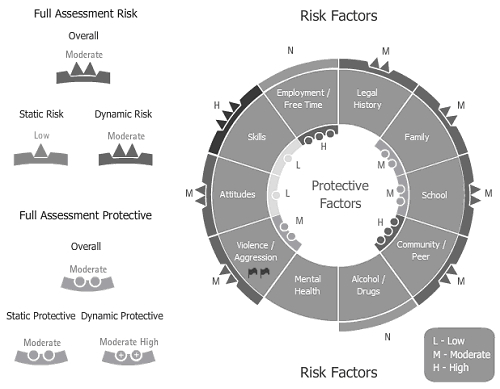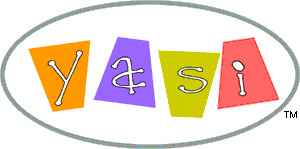Winter 2007
New Assessment and Case Planning
Tool Coming to DJJ
By: Scott Reiner, VADJJ
For the past several years, the Department of Juvenile Justice has emphasized using validated, structured decision making instruments in various aspects of community and institutional operations. Tools such as the risk assessment instrument, the detention assessment instrument, and the JCC classification instrument have been employed to bring improved consistency and effectiveness of activities in line with our agency mission. While we have generally been pleased with the impact of these instruments, it has become clear that in the area of our risk assessment tool for classifying youth according to their relative likelihood of re-offending, there is room for improvement. Our current instrument, developed in the late 1990’s has been described as a “second generation” instrument, in that while it accurately classifies according to risk of re-offense, it is generally weaker in identifying particular areas of risk/needs, strengths and protective factors, and in making a direct link to case planning activities. Newer, “third-generation” risk assessment instruments address these factors and make the assessment process more valuable than those that simply classify a youth into a risk category. Improving our assessment instruments and practices is one strategy that can assist us in achieving important goals of the newly formulated DJJ Strategic Plan in areas such as reducing recidivism, improving community functioning of youth under supervision, and improving diversion decisions.
Recognizing this, after reviewing proposals from several vendors, the Department has entered in a contract to implement a new, “third-generation” assessment instrument for juvenile offenders. The Youth Assessment and Screening Instrument, or YASI, assesses risk, need and protective factors and helps develop case plans for youth. The YASI includes a brief “pre-screening” version which can be used at the time of intake to assist in early decision-making such as appropriateness for diversion and targets for diversion plans. The pre-screen arrives at an overall risk level as well as separate risk scores for legal history and social history (e.g., family, school and other adjustment domains). Much of the information for the YASI pre-screen is available from the JTS system and the remainder from a brief interview with the youth and/or family. The pre-screen generates a risk score on a four-point scale from No Risk through High Risk.
The full YASI instrument examines and generates risk and protective scores for each of 10 domains, as well as overall risk and protective factor classifications. These domains are legal history, family, school, community and peers, alcohol and drugs, mental health, aggression, (pro- and anti-social) attitudes, (social and cognitive) skills, and employment and free time. The full YASI will be employed for pre- and post-dispositional reports and case planning activities.
Once the YASI has been completed and the data entered into the computer software, the YASI generates several useful products. One is a complete risk and protective factor profile displayed in a graphic format (called “The Wheel”.) It includes ratings of both static (historic and unchangeable) and dynamic (changeable) risks and protective factors in each of the 10 domains. Static variables (typically delinquent history) are necessary and efficient predictors of recidivism. Dynamic variables are predictors of recidivism that point to youth characteristics and behavior patterns that can and need to change in order to reduce future problems. The YASI generates a six level risk classification from Low through Very High. The software also generates a narrative report that provides a summary of the findings and which can be used for part of a social history report or referral package for a service provider. The final product is a case (supervision) plan that builds on those areas identified by the YASI and allows the probation officer to prioritize areas to be addressed, establish short- and long-term goals, and specific interventions (with persons responsible and target dates) for those areas. We are presently working with the vendor, Orbis Partners, to customize this feature with the intent that the YASI-generated case plan will meet all DJJ requirements so as to allow a seamless, efficient and comprehensive process of assessment and case planning.

The YASI has been validated and is in use in a number of states and local jurisdictions (e.g., N.Y., Illinois, Washington, Mississippi). Validation studies reveal that the YASI is an accurate method of placing youth in categories that correspond to their likelihood of future arrests and future violent offenses. It is valid across age, sex and ethnic groups. As we implement YASI in Virginia, we will be gathering data and re-validating the tool using our own juvenile offender population.
Our implementation of the YASI will come with considerable training. The first part of training is a two-day session that emphasizes administering the instrument and interviewing styles that lead to enhancing youth motivation. This training includes both didactic presentations and skill-building activities. Any staff member who may be completing an assessment (as well as those who supervise these activities) would attend this training. A third day of training is designed specifically for supervisors to address issues relevant to their role in the process. At the completion of the initial training, participants are prepared to begin completing YASIs and generating assessment results. After a few months, the second phase of training will be implemented focusing on the application of the assessment results to case planning. This is also a two-day session with a third day specifically designed for supervisors. This case planning session includes an emphasis on engaging the youth in the process of selecting and committing to their own goals for change. A training of trainers component is in the contract to allow DJJ to build its own capacity for ongoing training.
The YASI will be implemented in phases and as court service units are trained and begin its use, it will replace our existing risk assessment instrument. The first four units to be trained will be the 15th (Fredericksburg), 13th (Richmond), 12th (Chesterfield), and 11th (Petersburg). Training is scheduled to begin in the Spring. Additional units for the second and subsequent waves of implementation will be identified in the near future.
If you have any questions about this exciting project, please contact Scott Reiner (scott.reiner@djj.virginia.gov or at 804-371-0720) and you can also see more information (including a PowerPoint presentation) about YASI at http://www.orbispartners.com/frame.htm (click on “yasi”).
Scott Reiner is the Program Development Manager for the Virginia Department of Juvenile Justice's Division of Community Programs.


